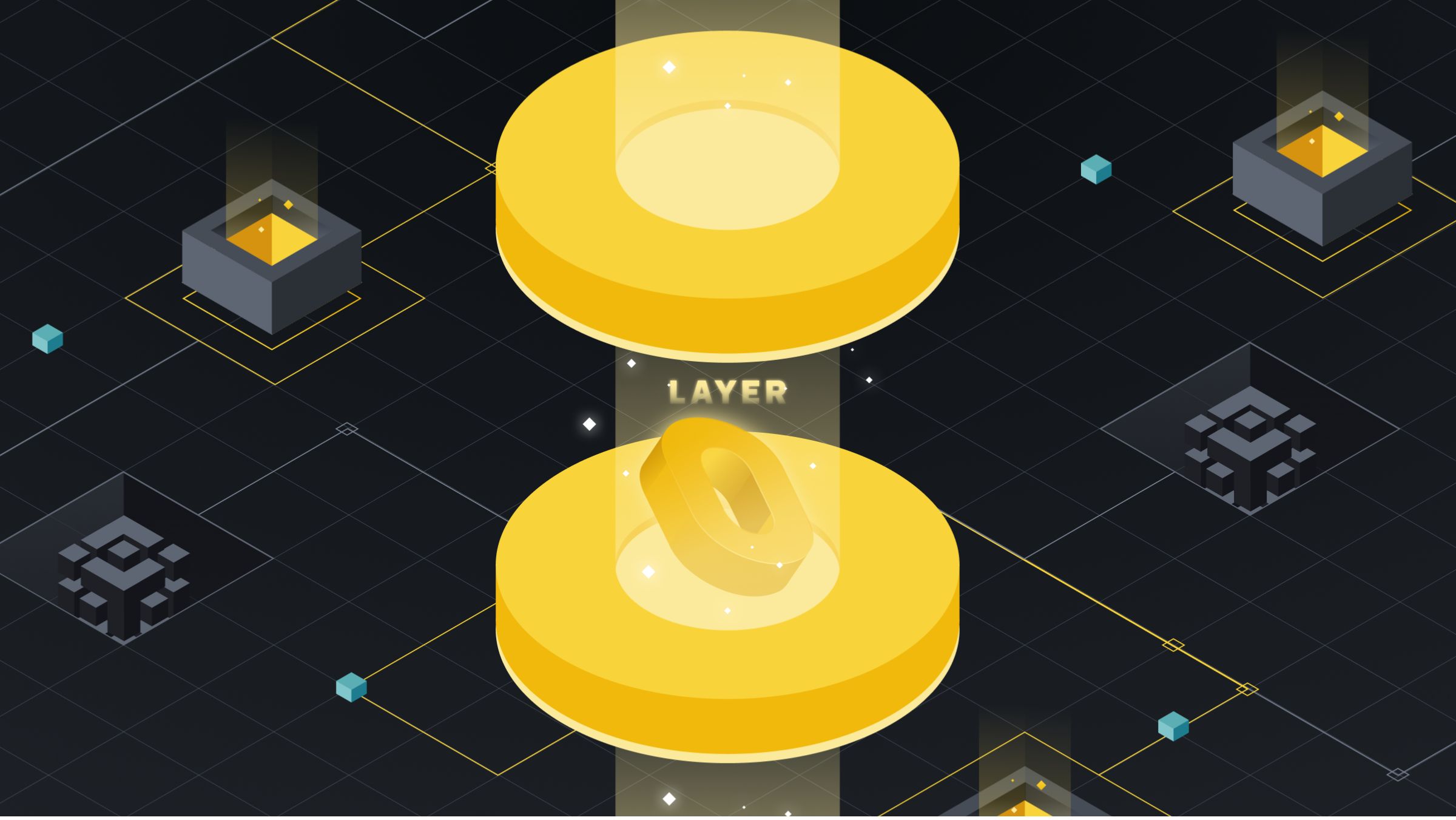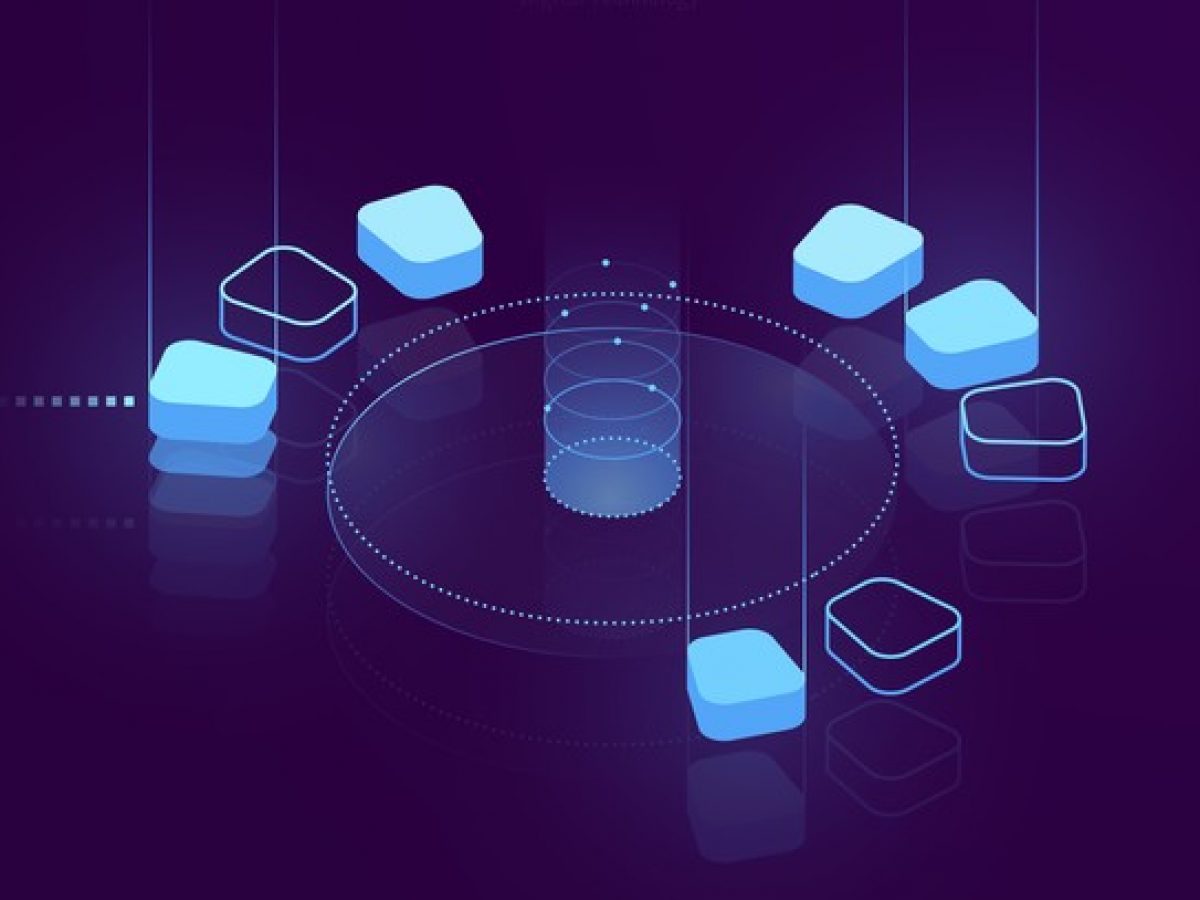Introduction
Welcome to the fascinating world of blockchain networks. In today’s ever-evolving digital landscape, blockchain has emerged as a revolutionary technology with the potential to transform various industries.
The blockchain network is an innovative decentralized system that allows for secure, transparent, and immutable transactions. Originally introduced as the underlying technology for cryptocurrencies like Bitcoin, blockchain has now transcended its initial purpose and is being explored for a wide range of applications.
At its core, the blockchain network is a distributed ledger that records and verifies transactions across multiple nodes or computers. Unlike traditional centralized systems, where a single authority or intermediary is responsible for maintaining and validating transactions, blockchain operates on a peer-to-peer network, where all participants have equal access and control.
The concept of blockchain was first introduced by an individual or group of individuals known by the pseudonym Satoshi Nakamoto in a 2008 whitepaper titled “Bitcoin: A Peer-to-Peer Electronic Cash System.” Since then, blockchain has gained immense popularity and has become the backbone of various decentralized applications.
Blockchain gained prominence primarily due to its ability to provide security, transparency, and immutability. The decentralized nature of blockchain eliminates the need for intermediaries, making transactions more efficient and cost-effective.
In this article, we will delve into the intricacies of the blockchain network, exploring its functionality, components, and different types. We will also discuss the advantages and challenges associated with blockchain technology, as well as its real-world applications. So, let’s dive in and unravel the mysteries of the blockchain network.
What is the Blockchain Network?
The blockchain network is a decentralized and transparent digital ledger that records and verifies transactions across multiple computers or nodes. It operates on a peer-to-peer network and eliminates the need for intermediaries, making it more efficient, secure, and cost-effective compared to traditional centralized systems.
At its essence, a blockchain is a chain of blocks, with each block containing a list of validated transactions. These blocks are linked to each other using cryptographic algorithms, creating an unalterable and tamper-proof record of transactions.
What sets the blockchain network apart from traditional databases is its decentralized nature. Instead of relying on a central authority, such as a bank or government, to validate and verify transactions, blockchain relies on consensus mechanisms among the participating nodes. This consensus ensures that all nodes agree on the validity of transactions, making it extremely difficult for any malicious actor to manipulate or alter the data.
The transactions recorded on the blockchain network are permanent and immutable. Once a transaction is added to a block and validated, it becomes a part of the blockchain’s history and cannot be changed retroactively. This feature makes blockchain highly secure and eliminates the risk of fraud or data manipulation.
Blockchain technology offers a high level of transparency due to its public nature. Anyone can access the blockchain network and view the transactions recorded on it. However, the privacy of individuals or organizations involved in these transactions is protected through the use of cryptographic techniques, such as digital signatures.
While blockchain gained prominence as the technology underlying cryptocurrencies like Bitcoin, its potential applications extend far beyond the realm of digital currencies. Blockchain can be used to facilitate a wide range of transactions, including supply chain management, voting systems, intellectual property protection, and even healthcare records.
Overall, the blockchain network is a groundbreaking innovation that has the potential to revolutionize numerous industries by offering secure, transparent, and efficient transactions. Its decentralized nature, immutability, and transparency make it a powerful tool for building trust and reducing reliance on intermediaries.
In the following sections, we will explore how the blockchain network works, its components, different types of blockchain networks, and the advantages and challenges associated with this transformative technology. So, let’s continue our journey into the fascinating world of blockchain.
How Does the Blockchain Network Work?
Understanding how the blockchain network works requires grasping its key concepts and processes. At its core, the blockchain network operates on a series of interconnected blocks that store and validate transactions. Let’s dive into the inner workings of this innovative technology.
1. Decentralization and Consensus:
Blockchain eliminates the need for a central authority by distributing transaction data across multiple nodes in a network. These nodes work together to reach a consensus on the validity and order of transactions through consensus mechanisms such as Proof of Work (PoW) or Proof of Stake (PoS).
2. Creation of a Block:
Transactions are grouped into blocks, which act as containers for recording data. Each block has a unique identifier, a timestamp, and a reference to the previous block, which establishes the chain-like structure of the blockchain.
3. Validation and Verification:
Before a transaction is added to a block, it must go through a process of validation and verification by the participating nodes. This ensures that the transaction is legitimate and complies with the predetermined rules of the blockchain network.
4. Cryptographic Hash Function:
Each block contains a cryptographic hash function, which takes the input data and produces a fixed-size alphanumeric string. This hash value is unique to the data within the block and serves as a digital fingerprint for the block. Any change in the data would result in a different hash value, making it virtually impossible to alter previous blocks without detection.
5. Mining and Consensus Mechanisms:
In Proof of Work (PoW) consensus mechanisms, miners, or nodes, compete to solve complex mathematical puzzles. The first miner to solve the puzzle is rewarded with newly created cryptocurrency tokens and has the right to add the next block to the blockchain. Proof of Stake (PoS) consensus mechanisms, on the other hand, determine the next block creator based on the stake or ownership of a certain amount of cryptocurrency within the network.
6. Adding a Block to the Chain:
Once a block has been mined and validated, it is added to the blockchain, linking it to the previous block through the unique identifier. As the chain grows, it becomes more secure, as altering a single block would require recalculating the cryptographic hash of all subsequent blocks, a computationally expensive and time-consuming task.
7. Transparency and Security:
The transparency of the blockchain network allows anyone to view the transactions recorded on the blockchain. However, the actual identities of the participants are protected through the use of cryptographic techniques, ensuring the privacy and security of sensitive information.
The decentralized and secure nature of the blockchain network has made it a game-changer in various industries. In the next sections, we will explore the components of the blockchain network, its different types, and the advantages and challenges associated with this transformative technology.
Components of the Blockchain Network
The blockchain network consists of several key components that work together to enable its decentralized and secure nature. Understanding these components is crucial to comprehending the inner workings of this groundbreaking technology. Let’s explore the key components of the blockchain network:
1. Distributed Ledger:
The distributed ledger is at the heart of the blockchain network. It is a digital ledger that stores a record of all transactions made on the network. This ledger is distributed across multiple nodes, ensuring transparency and eliminating the need for a central authority.
2. Blocks:
Blocks are containers that hold a collection of validated transactions. Each block contains a unique identifier, a timestamp, and a reference to the previous block, creating a chronological chain of blocks.
3. Transactions:
Transactions are the actions or operations performed on the blockchain network. They include the transfer of digital assets, the execution of smart contracts, or any other activity recorded on the blockchain.
4. Cryptographic Hash Function:
A cryptographic hash function is a mathematical algorithm that converts input data of any size into a fixed-size alphanumeric string. This function ensures the integrity and security of the data by generating a unique hash value for each block, making any tampering with the data easily detectable.
5. Consensus Mechanism:
The consensus mechanism is a vital component of the blockchain network, as it enables agreement among the participating nodes on the validity of transactions and the order in which they are added to the blockchain. Popular consensus mechanisms include Proof of Work (PoW), Proof of Stake (PoS), and Delegated Proof of Stake (DPoS).
6. Smart Contracts:
Smart contracts are self-executing digital contracts that automatically execute predefined actions when specific conditions are met. These contracts are stored and executed on the blockchain network, without the need for intermediaries, providing transparency, efficiency, and security.
7. Nodes:
Nodes are individual computers or devices that participate in the blockchain network. They store a copy of the entire blockchain and contribute to the validation and verification of transactions. Nodes can be further categorized into full nodes, which store complete copies of the blockchain, and light nodes, which rely on other nodes for transaction validation.
8. Wallets:
Wallets are digital applications that allow users to store, manage, and transact cryptocurrencies or other digital assets. Wallets provide a secure way to interact with the blockchain network, enabling users to send and receive assets.
Each component plays a vital role in the functioning of the blockchain network. The combination of these components results in a secure, transparent, and decentralized system that is transforming various industries. In the next sections, we will delve into the different types of blockchain networks, the advantages they offer, and the challenges they face.
Types of Blockchain Networks
The blockchain network has evolved over time, giving rise to different types of blockchain networks, each with its own characteristics and use cases.
1. Public Blockchain:
A public blockchain network is open to anyone and allows anyone to participate, validate, and add transactions to the blockchain. It offers transparency and immutability, making it suitable for applications such as cryptocurrency transactions, decentralized applications (DApps), and voting systems.
In contrast to public blockchains, private blockchain networks are restricted to a specific group of participants. Permission is required to join, validate, and add transactions to the network. Private blockchains are often used by organizations for internal purposes, such as supply chain management, where confidentiality and control are crucial.
A consortium blockchain network is governed by a group of organizations known as the consortium. In this type of network, permission to validate and add transactions is restricted to consortium members. Consortium blockchains are commonly used in industries that require collaboration and trust among a select group of participants, such as banking and finance.
4. Hybrid Blockchain:
A hybrid blockchain combines elements of both public and private blockchains. It allows for a customizable level of privacy while still benefiting from the transparency and security features of a public blockchain. Hybrid blockchains are often used in sectors like healthcare, where certain data must remain private, but other data can be publicly accessible.
5. Blockchain-as-a-Service (BaaS):
Blockchain-as-a-Service is a cloud-based service that allows individuals and organizations to develop, deploy, and manage their own blockchain networks without the complexity of infrastructure setup. BaaS providers offer pre-built frameworks and tools, enabling faster adoption of blockchain technology.
Each type of blockchain network serves specific purposes based on the requirements of the application or industry. While public blockchains provide transparency and decentralization, private and consortium blockchains offer greater control and privacy. Hybrid blockchains combine the advantages of both, catering to specific use cases with varied needs.
As blockchain technology matures, new types of blockchain networks may emerge, adapting to different requirements and addressing challenges such as scalability, interoperability, and energy consumption.
In the following sections, we will explore the advantages that blockchain networks offer, as well as the challenges and limitations they face in their widespread adoption.
Advantages of the Blockchain Network
The blockchain network offers numerous advantages over traditional centralized systems, revolutionizing how transactions are conducted and data is managed. Let’s explore the key advantages of this transformative technology:
1. Decentralization:
Decentralization is one of the core principles of blockchain. By eliminating the need for a central authority, blockchain allows for a more democratic and peer-to-peer network. This leads to increased transparency, reduced reliance on intermediaries, and greater trust among participants.
2. Transparency and Immutability:
Transactions recorded on the blockchain are transparent and can be viewed by anyone in the network. This transparency fosters trust among participants and prevents fraudulent activities. Additionally, the immutability of blockchain data ensures that once a transaction is recorded, it cannot be altered or tampered with, providing a high level of security and integrity.
3. Enhanced Security:
The cryptographic algorithms used in blockchain networks ensure the security and integrity of data. Each transaction is secured using digital signatures, and the unique hash value of each block makes it virtually impossible to alter or manipulate the data without detection. This increased security reduces the risk of fraud and unauthorized access.
4. Efficiency and Cost Savings:
Blockchain eliminates the need for intermediaries in transaction processes, resulting in faster and more efficient transactions. By removing middlemen, blockchain reduces transaction costs, making it more cost-effective for businesses and individuals alike. Additionally, smart contracts automate and streamline workflows, further enhancing efficiency and reducing administrative overhead.
5. Improved Traceability and Auditability:
Blockchain’s transparent nature allows for improved traceability and auditability. Every transaction and its associated details are recorded on the blockchain, creating an immutable audit trail. This feature is particularly valuable in supply chain management, where it enables the tracking of products from origin to destination and ensures authenticity and quality.
6. Reducing Data Loss and Single Points of Failure:
Traditional centralized systems are prone to data loss and single points of failure. With blockchain’s decentralized architecture, data is replicated and distributed across multiple nodes, reducing the risk of data loss or corruption. Even if a node fails or is compromised, the data is still available on other nodes in the network.
7. Global Accessibility:
Blockchain networks are accessible to anyone with an internet connection, making it possible for individuals from any part of the world to participate in transactions and access decentralized applications. This global accessibility promotes financial inclusion, especially in regions with limited access to traditional banking infrastructure.
The advantages offered by the blockchain network have far-reaching implications across various industries, including finance, supply chain management, healthcare, and more. However, it is important to acknowledge that blockchain technology also faces challenges and limitations, as we will explore in the next section.
Challenges and Limitations of the Blockchain Network
While the blockchain network offers numerous advantages, it is not without its challenges and limitations. Understanding these limitations is crucial for a comprehensive perspective on the potential impact of blockchain technology:
1. Scalability:
Scalability is one of the major challenges facing blockchain networks. As the number of transactions increases, the network’s capacity to handle them may become limited, resulting in slower validation times and higher costs. Solving scalability issues is essential for blockchain to support large-scale adoption and meet the demands of global transaction volumes.
2. Energy Consumption:
Many blockchain networks, especially those that employ Proof of Work (PoW) consensus algorithms, require significant computational power and energy consumption. This has raised concerns about the environmental impact of blockchain technology. Efforts are being made to develop more energy-efficient consensus mechanisms, such as Proof of Stake (PoS).
3. Regulatory and Legal Challenges:
The decentralized nature of blockchain networks makes regulatory compliance and legal frameworks challenging. Issues such as data protection, privacy, and cross-border transactions require careful consideration and adaptation of existing regulations to accommodate the unique aspects of blockchain technology.
4. Interoperability:
Interoperability refers to the ability of different blockchain networks to communicate and interact seamlessly with each other. Lack of interoperability poses a barrier to the widespread adoption of blockchain technology, as it hinders the efficient transfer of assets and data across different networks and platforms.
5. User Experience and Adoption:
User experience plays a critical role in the adoption of any technology. Blockchain, being a relatively new and complex technology, faces challenges in terms of user-friendliness and accessibility. Improvements in user interfaces, education, and awareness are essential to encourage broader adoption.
6. Governance and Consensus:
The governance of blockchain networks and the consensus mechanisms used to validate transactions remain areas of ongoing research and exploration. Developing robust governance structures that balance decentralization, security, and decision-making processes is crucial for the long-term success and sustainability of blockchain networks.
7. Privacy and Security Challenges:
While blockchain offers security through cryptography, the transparency of public blockchains raises concerns about the privacy of sensitive data. Striking the right balance between transparency and privacy is a challenge that needs to be addressed to gain wider adoption in sectors that require confidentiality.
Acknowledging and addressing these challenges and limitations is essential for the continued growth and development of blockchain technology. Innovation and collaboration among industry players, governments, and researchers are key to overcoming these hurdles and unlocking the full potential of the blockchain network.
Real-World Applications of the Blockchain Network
The blockchain network has proven its potential to transform various industries and revolutionize traditional processes. Let’s explore some of the compelling real-world applications where blockchain technology is being implemented:
1. Financial Services:
Blockchain has had a significant impact on the financial services industry. It has enabled faster and more secure cross-border transactions, eliminating intermediaries and reducing costs. Additionally, blockchain is being used for smart contracts, enabling automatic execution of predefined agreements without the need for manual intervention.
2. Supply Chain Management:
Blockchain provides transparency and traceability in supply chains, ensuring the authenticity, quality, and proper handling of products. It enables real-time tracking of goods from their origin to destination, reducing fraudulent activities, enhancing efficiency, and promoting sustainability.
3. Healthcare:
In healthcare, blockchain is being used to secure electronic health records, improving data integrity and accessibility while maintaining patient privacy. It also facilitates the secure sharing of medical records among different healthcare providers, reducing duplication and ensuring accurate and timely information exchange.
4. Voting Systems:
Blockchain technology offers the potential to revolutionize voting systems, making them more transparent, secure, and tamper-proof. Blockchain-based voting systems can ensure the accuracy and integrity of votes while maintaining voter privacy, thereby enhancing trust and participation in democratic processes.
5. Intellectual Property:
Blockchain can be employed to verify and protect intellectual property rights. By timestamping creations and establishing an immutable record of ownership, blockchain provides a transparent and tamper-proof mechanism for artists, musicians, and creators to secure their intellectual property and verify rights claims.
6. Energy Sector:
Blockchain technology is being explored for peer-to-peer energy trading, where individuals can directly trade energy with one another, eliminating the need for intermediaries and reducing costs. It also enables the transparent tracking of energy production and consumption, promoting energy efficiency and sustainability.
7. Charity and Aid Organizations:
Blockchain provides transparency in the disbursement of funds for charitable and aid organizations. Donors can track how their contributions are being utilized, ensuring transparency, accountability, and reducing the risk of corruption. Blockchain also enables faster and more secure transactions, allowing for efficient aid delivery in times of crisis.
These are just a few examples of how blockchain technology is being applied in real-world scenarios. The potential applications of blockchain extend beyond these sectors, with ongoing exploration and innovation accelerating its adoption across various industries.
In the next section, we will conclude our exploration of the blockchain network, summarizing the key takeaways and its potential for shaping the future.
Conclusion
The blockchain network has emerged as a transformative technology with the potential to revolutionize various industries and redefine traditional processes. With its decentralized, transparent, and secure nature, blockchain offers numerous advantages, ranging from enhanced trust and security to improved efficiency and cost savings.
By providing a decentralized and tamper-proof record of transactions, blockchain has the power to disrupt sectors such as finance, supply chain management, healthcare, voting systems, and more. It eliminates the need for intermediaries, streamlines processes, and ensures transparency and accountability.
However, blockchain technology is not without its challenges and limitations. Scalability, energy consumption, regulatory compliance, user experience, privacy, and security concerns are some of the areas that require ongoing research and development to overcome hurdles and maximize the potential of blockchain networks.
As blockchain technology continues to evolve, there is a need for collaboration among industry players, governments, and researchers to address these challenges and unlock the full potential of blockchain networks. Further innovation, standardization, and adoption of best practices will pave the way for wider acceptance and integration of blockchain into mainstream applications.
In conclusion, the blockchain network has already made a significant impact in various sectors, reshaping processes, and ushering in a new era of transparency, security, and efficiency. The journey of blockchain technology is still in its early stages, and its continued evolution will shape the future of how we conduct transactions and manage data. By embracing the potential of blockchain, we can leverage its advantages and address its challenges to create a more equitable, secure, and efficient digital ecosystem for future generations.

























